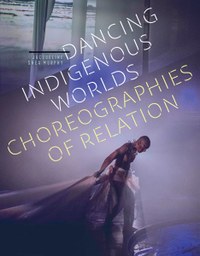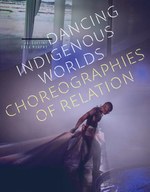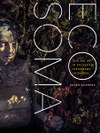Dancing Indigenous Worlds
Choreographies of Relation
Jacqueline Shea Murphy

Jacqueline Shea Murphy brings contemporary Indigenous dance makers into the spotlight, putting critical dance studies and Indigenous studies in conversation with one another in fresh and exciting new ways. Exploring Indigenous dance from North America and Aotearoa (New Zealand), she shows how dance artists communicate Indigenous ways of being, and generate a political force, engaging Indigenous understandings and histories.
This remarkable text effectively establishes Indigenous dance studies as a vibrant time-based field of inquiry. Crafting theoretical models in direct relationship to repeated practices of witnessing and experiencing, Jacqueline Shea Murphy models a rich future for scholarship as a shared encounter among stakeholders to performance. Urgent, important, and written to endure as a document of continued creativity, Dancing Indigenous Worlds confirms the intellectual possibilities of translating gesture to text and of moving with care.
Thomas F. DeFrantz, Northwestern University
In Dancing Indigenous Worlds, Jacqueline Shea Murphy brings contemporary Indigenous dance makers into the spotlight, putting critical dance studies and Indigenous studies in conversation with one another in fresh and exciting new ways. Exploring Indigenous dance from North America and Aotearoa (New Zealand), she shows how dance artists communicate Indigenous ways of being, as well as generate a political force, engaging Indigenous understandings and histories.
Following specific dance works over time, Shea Murphy interweaves analysis, personal narrative, and written contributions from multiple dance artists, demonstrating dance’s crucial role in asserting and enacting Indigenous worldviews and the embodied experiences of Indigenous peoples. As Shea Murphy asserts, these dance-making practices not only disrupt the structures that European colonization feeds on and strives to maintain but they can also recalibrate contemporary dance.
Based on more than twenty years of relationship building and research, Shea Murphy’s work engages with growing, and largely underreported, discourses on decolonizing dance studies, and the geopolitical, gendered, racial, and relational meanings that dance theorizes and negotiates. She also includes discussions about the ethics of writing about Indigenous knowledge and peoples as a non-Indigenous scholar, and models approaches for doing so within structures of ongoing reciprocal, respectful, responsible action.
Accessibility features: Retail e-book files for this title are screen-reader friendly with images accompanied by short alt text and/or extended descriptions.
Cover alt text: Backlit performer on a hazy stage, garbed minimally in white cloth, pulling a train of fabric, beneath a projected image of a curtain and clouds.
$35.00 paper ISBN 978-1-5179-1268-0
$140.00 cloth ISBN 978-1-5179-1267-3
408 pages, 44 b&w photos, 7 x 9, January 2023

Jacqueline Shea Murphy is associate professor of dance at the University of California–Riverside. She is the author of The People Have Never Stopped Dancing: Native American Modern Dance Histories (Minnesota, 2007) and founder of the ICR (Indigenous Choreographers at Riverside) Gathering project.

This remarkable text effectively establishes Indigenous dance studies as a vibrant time-based field of inquiry. Crafting theoretical models in direct relationship to repeated practices of witnessing and experiencing, Jacqueline Shea Murphy models a rich future for scholarship as a shared encounter among stakeholders to performance. Urgent, important, and written to endure as a document of continued creativity, Dancing Indigenous Worlds confirms the intellectual possibilities of translating gesture to text and of moving with care.
Thomas F. DeFrantz, Northwestern University
In Dancing Indigenous Worlds, Jacqueline Shea Murphy performs a deeply ethical, deliberate ‘witnessing’ of Indigenous dance making. In these stories of how to create radical relationality between bodies, land, history, food—and milk as more than food—the reader should be aware they are being readied; a space has been prepared, the invocations have been made, contemporary movements connected to dance genealogies, past brutalities cast in the surrounding shadows, the spotlight is on bright, and you must step into this world that has been danced for you. There is room for all, and everything, as Shea Murphy reminds us, begins with respect.
Michelle Erai, author of Girl of New Zealand: Colonial Optics in Aotearoa
The widely varied contexts within Dancing Indigenous Worlds demonstrates the vibrancy of current respectful, relational, Indigenous choreographies.
CHOICE

Contents
Preface
Introduction
Choreographing Relationality
Modern Dance and Modernity/Coloniality
Recalibrations of Relational Exchange
Intersections of Dance and Indigenous Studies
1. Choreographies of Relational Reciprocity
Hosts and Visitors, Aotearoa, 2009
Manaakitanga in Motion: Choreographies of Possibility
With Jack Gray
Hashtag Mitimiti: Where You At?
With Andrew Kendall, Diane Kendall, Tia Reihana-Morunga, Deborah Cocker, and Toni Temehana Pasion
2. Choreographies of Perspectival Relationality
Dance Workshop, Riverside, California, 2006
With Rulan Tangen
Expansive Relationality/Of Bodies of Elements
Identities and Accountabilities, 2019
With Rulan Tangen
Interlude/Pause/Provocation
Refuge Rock: Otonabee River, Ontario, 2010
With Tanya Lukin Linklater
3. Choreographies of Relational Abun-dance
Precarity
Abundance and Abun-dance
Emily Johnson/Catalyst
4. Choreographies of Relational Refusings
Yirramboi, Melbourne, Australia, 2017
Facing Refusal
Teachings in Listening
Indigenous Dance Works/Indigenous Dance Making/Indigenous Writing
With Rosy Simas, Mishuana Goeman, Tanya Lukin Linklater, and Daystar/Rosalie Jones
Conclusion: Closing and Opening
Acknowledgments
Notes
Bibliography
Index














